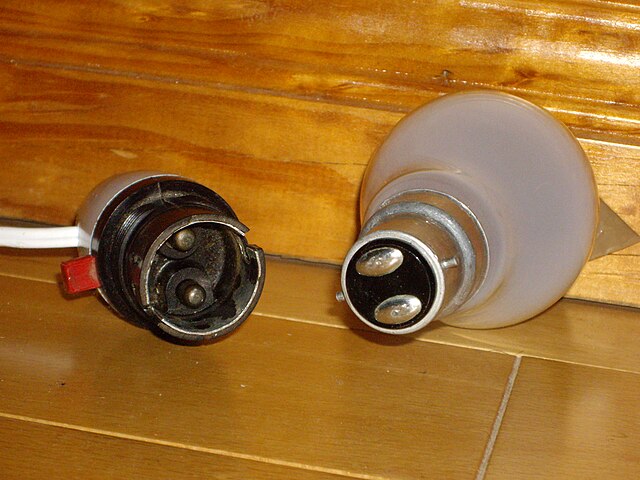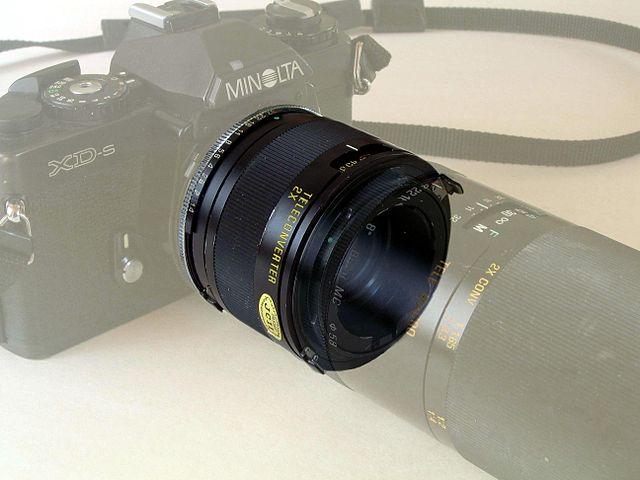A bayonet mount or bayonet connector is a fastening mechanism consisting of a cylindrical male side with one or more radial pins, and a female receptor with matching L-shaped slot(s) and with spring(s) to keep the two parts locked together. The slots are shaped like a capital letter L with serif ; the pin slides into the vertical arm of the L, rotates across the horizontal arm, then is pushed slightly upwards into the short vertical "serif" by the spring; the connector is no longer free to rotate unless pushed down against the spring until the pin is out of the "serif".
Early-19th century socket bayonet
Socket of a bayonet
LED lamps with GU10 bi-pin twist-lock mount
Incandescent light bulb with double contact B22d bayonet mount, and corresponding socket with sprung connectors
A lens mount is an interface – mechanical and often also electrical – between a photographic camera body and a lens. It is a feature of camera systems where the body allows interchangeable lenses, most usually the rangefinder camera, single lens reflex type, single lens mirrorless type or any movie camera of 16 mm or higher gauge. Lens mounts are also used to connect optical components in instrumentation that may not involve a camera, such as the modular components used in optical laboratory prototyping which join via C-mount or T-mount elements.
Male mount of Minolta MC-Rokkor 58mm 1:1.4 lens with female lens mount of an Minolta XD-7
A teleconverter attached between a camera and its objective
This lens adapter is a passive adapter designed for mounting a Nikon F mount lens to a Micro Four Thirds camera.







